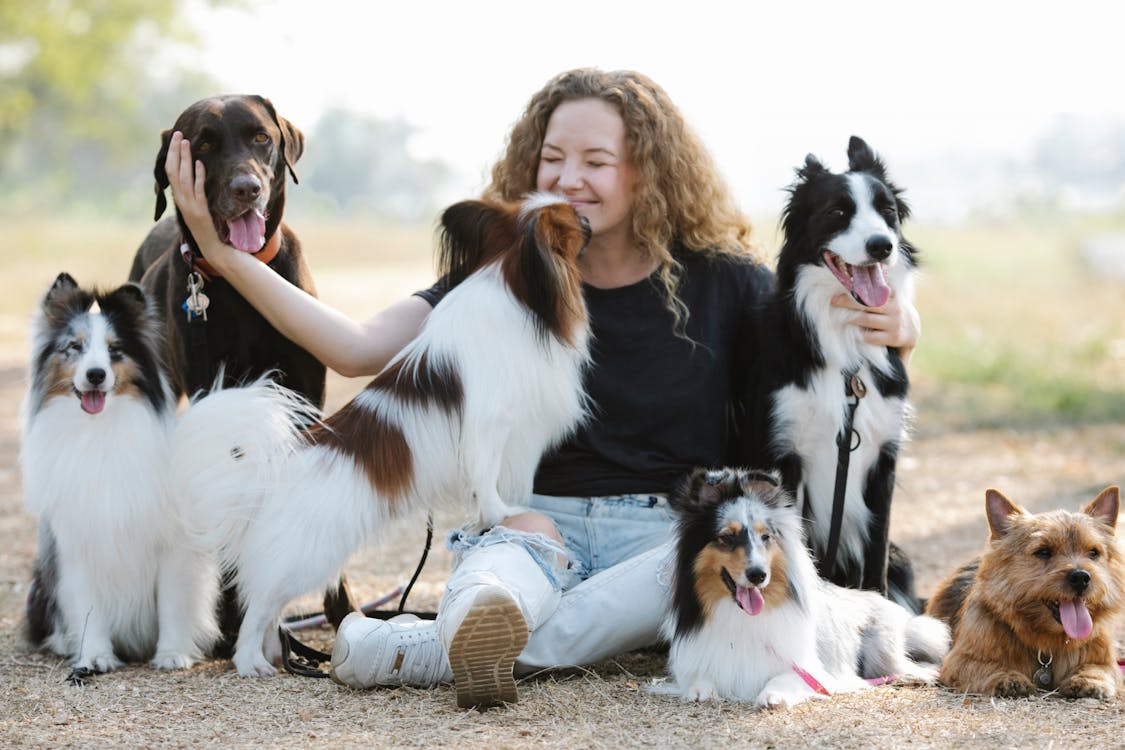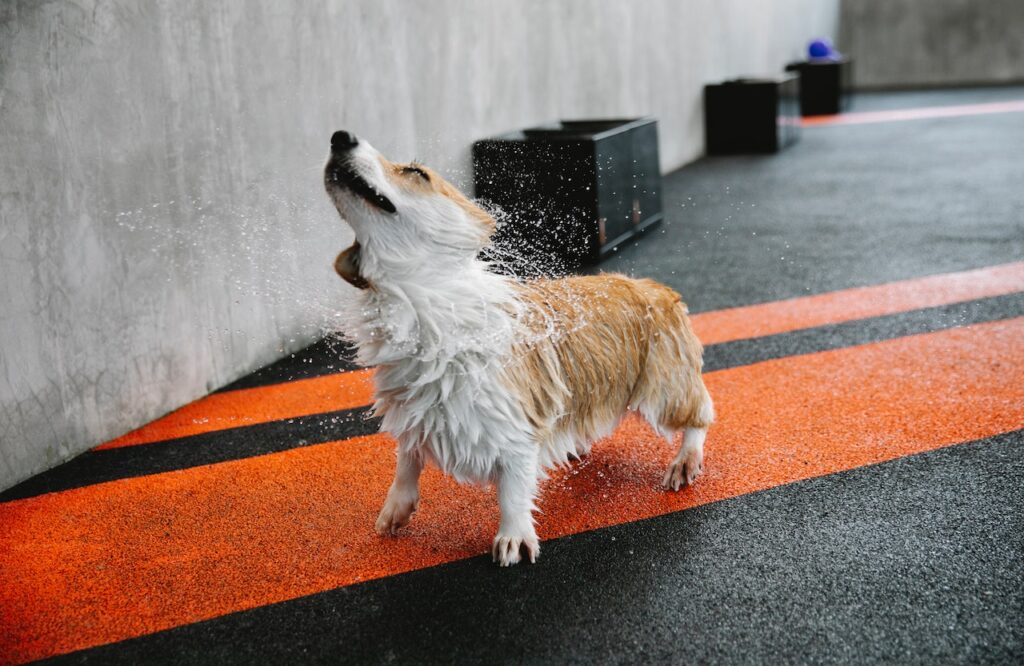Dogs, our loyal and beloved companions, have a way of capturing our hearts with their endearing and sometimes puzzling behaviors. From head tilting and tail chasing to zoomies and rolling in strange scents, dogs often display unique and unusual behaviors that leave us both amused and curious. While some of these quirks may seem mysterious, many have explanations rooted in their instincts, communication, and evolutionary history. In this article, we will delve into the world of unusual dog behaviors and explore the fascinating reasons behind these quirks of man’s best friend.
Head Tilting – Listening Intently

One of the most adorable and intriguing behaviors of dogs is the head tilt. When a dog cocks its head to one side, it’s often a response to a sound or word that piques their interest. Dogs have a remarkable sense of hearing, and the head tilt allows them to locate the source of a sound better. This behavior is particularly common when a dog hears a high-pitched or unfamiliar sound. It’s also possible that dogs use head tilting as a way to communicate with their human companions, showing that they are engaged and attentive.
Tail Chasing – Play or Instinct?
Tail chasing is a behavior that has puzzled dog owners for generations. While it can be amusing to watch, tail chasing may have various underlying motivations. In some cases, tail chasing is simply a form of play and self-amusement, especially in younger dogs or puppies. However, in certain situations, excessive tail chasing may be a sign of anxiety or boredom. Dogs may chase their tails in response to stress or as a displacement behavior when they don’t know how else to cope with a situation. If tail chasing becomes obsessive or compulsive, it’s essential to consult with a veterinarian or a professional dog trainer to address any underlying issues.
Zoomies – A Burst of Energy

Zoomies, also known as the “crazies” or “Frenetic Random Activity Periods (FRAPs),” are those sudden bursts of energy when dogs run around frantically and seemingly without a purpose. These playful outbursts are most commonly seen in young dogs and puppies, but dogs of all ages can experience zoomies. Zoomies are thought to be a natural way for dogs to release pent-up energy and express their joy and exuberance. They might occur after periods of inactivity or as a response to exciting stimuli, such as a visit from a favorite human or the prospect of going for a walk.
Rolling in Strange Scents – An Ancestral Behavior
Have you ever noticed your dog rolling in a foul-smelling or strange scent, such as the remains of a deceased animal or strong-smelling substances? This behavior may seem perplexing, but it harkens back to the dog’s ancestral instincts. Rolling in strong scents is believed to be a way for dogs to mask their own scent, a behavior inherited from their wild ancestors. By masking their scent, dogs could potentially avoid detection by predators or prey when hunting or exploring in the wild. Additionally, rolling in scents may also serve as a form of communication, as the odor is transferred to their fur, allowing them to share the information with other dogs in their pack.
Pawing – Seeking Attention or Play

When dogs paw at their owners or objects, they are often trying to communicate something. Pawing is a versatile behavior that can have multiple meanings. Dogs may paw at their owners to seek attention, affection, or playtime. It’s their way of saying, “Pay attention to me!” or “Let’s play!” However, pawing can also be a sign of anxiety or discomfort, especially if it’s accompanied by other body language cues like cowering or avoidance. Understanding the context in which the pawing occurs can help determine what your dog is trying to convey.
Sleeping Positions – Vulnerability and Comfort
The way dogs sleep and their sleeping positions can provide insights into their feelings of safety and comfort. Curling up in a tight ball with their tail covering their nose is a common sleeping position for dogs. This position reflects their instinct to protect their vital organs and conserve body heat, a behavior inherited from their wild ancestors. On the other hand, when dogs sleep sprawled out on their backs with their belly exposed, it signals a sense of comfort and trust. Exposing their vulnerable belly is a sign that they feel secure and safe in their environment.
Licking – Communication and Affection

Licking is a behavior that dogs use to communicate with humans and other dogs. Mother dogs lick their puppies to groom them and stimulate their breathing and digestion. As adults, dogs may lick humans as a sign of affection or to show submission. They may also lick themselves or objects as a self-soothing or self-grooming behavior. However, excessive licking, particularly of paws or other body parts, can be a sign of anxiety or allergies. If you notice your dog excessively licking, it’s essential to consult with a veterinarian to rule out any underlying health issues.
Eating Grass – Nature’s Remedy
One peculiar behavior that many dogs exhibit is eating grass. While the exact reason for this behavior is not entirely understood, several theories exist. Some dogs may eat grass simply because they enjoy the taste or texture. Others may do it to induce vomiting when they have an upset stomach. In the wild, canids would eat grass and plants as part of their diet, and domesticated dogs may retain this instinct. Eating grass is generally considered safe unless your dog ingests toxic plants or pesticides. If your dog frequently eats grass and displays signs of gastrointestinal distress, consult with a veterinarian to ensure there are no underlying health issues.
Unusual dog behaviors add to the charm and mystique of man’s best friend. From head tilting and tail chasing to zoomies and rolling in strange scents, each quirky behavior has a fascinating explanation rooted in dogs’ instincts, evolutionary history, and communication. Understanding these behaviors can deepen our bond with our canine companions and provide valuable insights into their emotions, needs, and happiness. As responsible dog owners, observing and interpreting our dogs’ behaviors helps us respond appropriately to their needs and create a fulfilling and loving relationship with our four-legged friends. Remember, the world of dog behaviors is as diverse and enchanting as the dogs themselves, and embracing these quirks is a celebration of the unique bond we share with our beloved pets.


